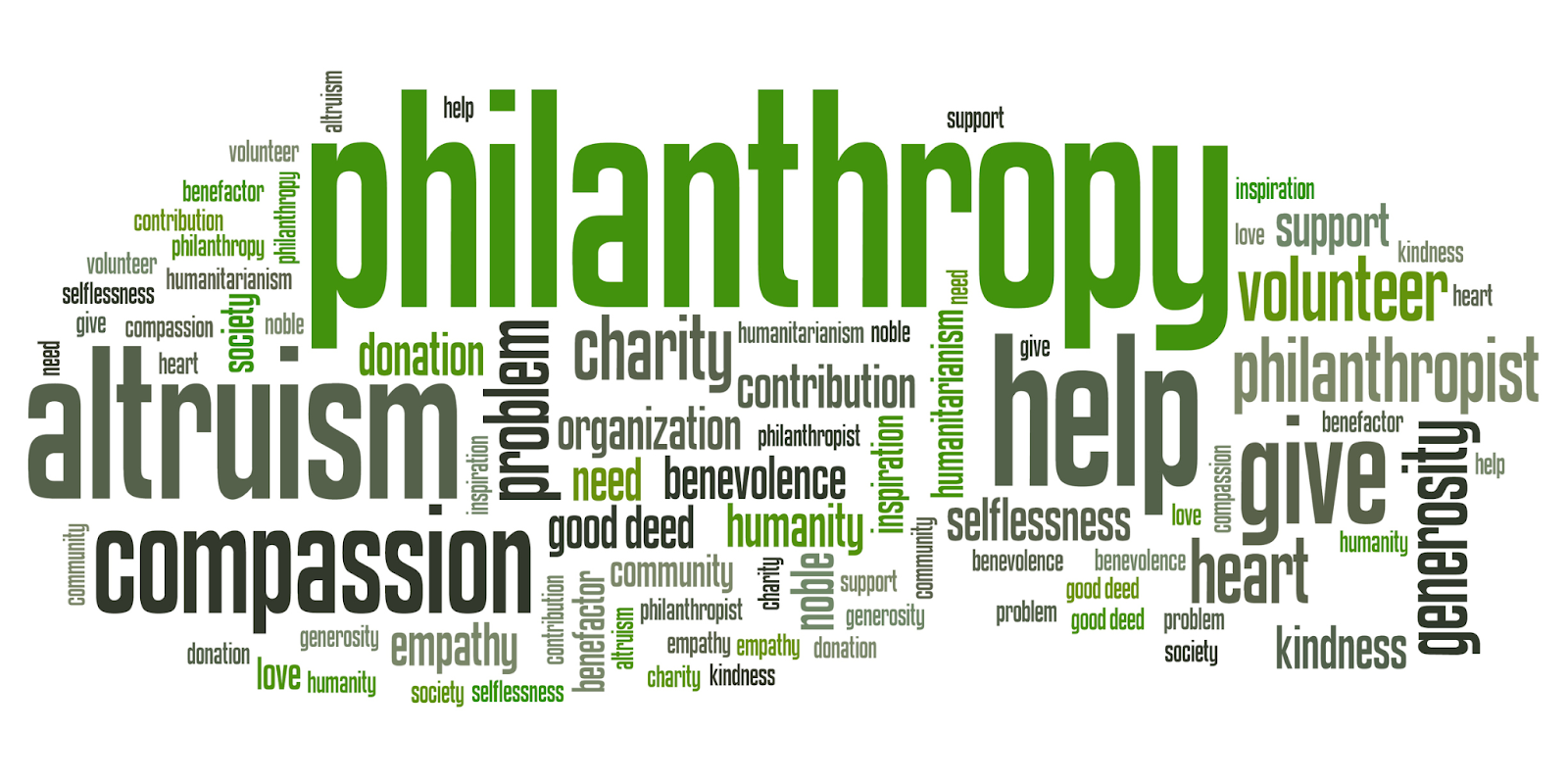Introduction
Philanthropy, derived from the Greek term meaning “love of humanity,” has played a crucial role in social development for centuries. It started as an act of kindness in ancient civilizations, where individuals offered resources to improve their communities. Today, philanthropy has evolved into a structured mechanism where private and public entities, alongside individuals, contribute toward social welfare on a grand scale. Whether it is an individual contributing to a local charity or a large corporation investing in global health initiatives, the underlying purpose remains the same: to create a positive, lasting impact.
Defining Philanthropy

Philanthropy encompasses a variety of actions aimed at improving the lives of others, whether through direct financial contributions, voluntary work, or providing expertise. It goes beyond charity, as it often focuses on addressing the root causes of societal issues rather than just alleviating immediate needs. For instance, instead of merely providing food to a community, a philanthropic organization might invest in agricultural training to help the community sustain itself over time.
Different Types of Philanthropy
Philanthropy can take various forms, including financial donations, volunteering, and donating material resources. While some philanthropists are motivated by pure altruism, others are driven by incentives like tax breaks or a desire for social recognition. Corporate entities, in particular, often integrate philanthropy as part of their Corporate Social Responsibility (CSR) strategies, aiming to improve public relations, foster goodwill, and create a positive brand image.
Types of Philanthropic Efforts

Individual Giving
Individual giving has historically been one of the most common forms of philanthropy. High-net-worth individuals (HNWIs) like Warren Buffett and Mackenzie Scott have donated billions to causes ranging from healthcare to climate action. However, philanthropy is not limited to the wealthy. Everyday people contribute to causes they care about, showing that even small donations can collectively make a large impact.
Corporate Philanthropy
Corporate philanthropy is another major area of philanthropy where companies give back to society, often through grants, donations, and employee volunteering programs. Many corporations have adopted CSR initiatives that not only benefit society but also boost employee morale and attract socially-conscious consumers. Examples include tech giants like Google and Microsoft, which contribute to global education and health initiatives, and smaller businesses that focus on local community programs.
Foundation Grants
Foundations, both private and public, are structured specifically to fund initiatives that address societal issues. Organizations like the Ford Foundation and the Rockefeller Foundation have a long history of supporting education, health, and economic development projects. Foundations often target specific issues and provide long-term support, making a sustained impact over time.
Impact Investing
Impact investing is a relatively new form of philanthropy where investors fund businesses and projects that aim to generate both social and financial returns. This approach allows philanthropists to address systemic issues by investing in companies that prioritize social and environmental sustainability. For example, some impact investors focus on clean energy startups, hoping to combat climate change while also generating financial returns.
The Impact of Philanthropy on Society
Philanthropy has a transformative effect across various sectors, including education, healthcare, economic development, and environmental conservation.
Education and Research
Philanthropic contributions to education provide opportunities for underserved communities, funding scholarships, schools, and educational programs. Philanthropic organizations also fund research initiatives in fields like medicine, technology, and the arts, leading to advancements that benefit society as a whole. For example, scholarships funded by donors can help students from disadvantaged backgrounds access higher education, improving their future opportunities.
Healthcare and Disease Prevention
The healthcare sector benefits greatly from philanthropic donations, especially in areas like disease prevention and medical research. Organizations like the Bill & Melinda Gates Foundation invest billions in global health initiatives, particularly in underdeveloped countries. Their efforts have helped to reduce the incidence of diseases like malaria and polio, improving the quality of life for millions.
Economic Development and Job Creation
Philanthropy also supports economic development by funding programs that create jobs, build infrastructure, and support small businesses. By providing skills training and access to resources, philanthropists help people achieve economic self-sufficiency. Programs that promote entrepreneurship and provide micro-loans to startups are examples of philanthropy’s impact on economic empowerment.
Environmental Conservation
Environmental philanthropy focuses on projects like wildlife conservation, clean energy, and sustainable agriculture. Philanthropic efforts in this area are crucial, as they support initiatives to reduce pollution, combat deforestation, and preserve biodiversity. These efforts are particularly important in addressing climate change, which poses an existential threat to communities worldwide.
The Role of Technology in Modern Philanthropy

Technology has dramatically changed the landscape of philanthropy, making it easier for people to give and for organizations to track their impact.
Crowdfunding and Online Platforms
Online platforms like GoFundMe, Kickstarter, and DonorsChoose allow individuals and organizations to raise funds for specific causes. Crowdfunding democratizes philanthropy, allowing people to contribute directly to projects they support. This approach has proven particularly effective in emergency situations, where funds need to be raised quickly to address urgent needs.
Data Analytics and AI
Data analytics and artificial intelligence help philanthropic organizations identify areas of greatest need and measure the impact of their efforts. By analyzing data, organizations can make informed decisions about where to allocate resources, ensuring maximum effectiveness.
Social Media as a Tool for Awareness
Social media platforms provide a powerful tool for raising awareness and mobilizing support. By sharing stories, campaigns, and achievements, organizations can reach a global audience, inspiring more people to get involved. Social media also allows for real-time updates, making donors feel more connected to the causes they support.
Challenges and Criticisms of Philanthropy
Despite its positive impact, philanthropy faces several challenges and criticisms.
Issues of Transparency
One of the main criticisms of philanthropy is the lack of transparency in how funds are used. Donors and the public want assurance that contributions are being used effectively, and organizations must be accountable in their operations.
Dependence on Philanthropy
Some communities and sectors become reliant on philanthropy, potentially neglecting sustainable solutions. Over-reliance on donations can also create a “savior complex,” where wealthy donors prioritize projects that align with their interests rather than the needs of the community.
Power Imbalances
Power imbalances between donors and recipients can be problematic, especially when donors impose their own agendas. In some cases, donor interests may overshadow the actual needs of a community, leading to ineffective solutions.
Impact Measurement
Measuring the impact of philanthropic efforts can be challenging. While some areas, like healthcare, provide quantifiable data, others, like social justice, may have intangible outcomes. Without proper evaluation, it’s difficult to determine the true effectiveness of philanthropic initiatives.
Philanthropy’s Future: Trends and Innovations
The future of philanthropy is evolving, with emerging trends and innovations promising greater impact.
Collaborative Philanthropy

Collaborative philanthropy brings together multiple stakeholders, including governments, nonprofits, and private companies, to address complex issues more effectively. Partnerships allow for the pooling of resources and expertise, increasing the potential for long-term impact.
Venture Philanthropy
Venture philanthropy applies principles from venture capital, investing in social enterprises that aim to address root causes rather than just symptoms. This approach supports high-impact projects, often providing both financial support and strategic guidance.
Ethical and Sustainable Giving
A growing emphasis on ethical and sustainable giving encourages philanthropists to consider the long-term effects of their contributions. Instead of one-time donations, philanthropists are focusing on sustainable initiatives that empower communities.
Conclusion
Philanthropy remains a powerful force for good, bridging gaps in social services, advancing research, and improving quality of life across the globe. Through innovative approaches and collaboration, philanthropy is shaping a future where both individuals and corporations can contribute to building a more equitable, sustainable world. As more people recognize the power of giving, philanthropy will continue to drive positive change, showing that collective effort can make a lasting difference.


